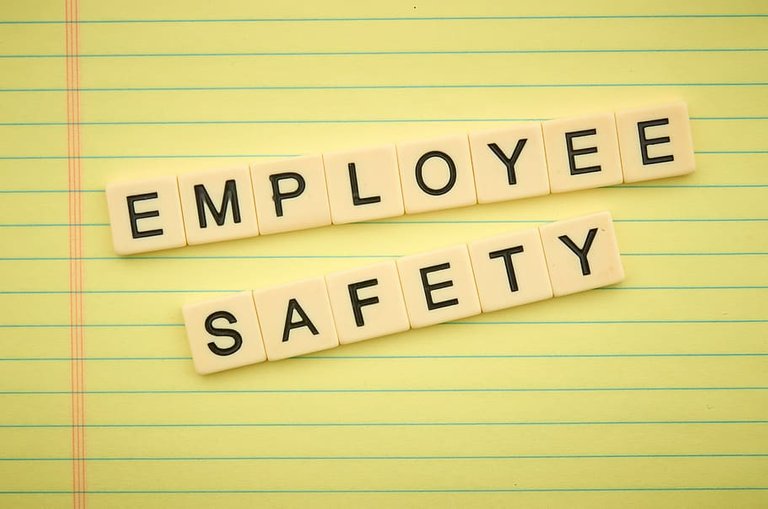A Comprehensive Guide to OSHA Compliance
Introduction
In the fast-paced world of modern industry, workplace safety is paramount. The Occupational Safety and Health Administration (OSHA) plays a crucial role in protecting the well-being of employees across various sectors in the United States. OSHA establishes and enforces safety regulations that help prevent workplace accidents and create a healthier work environment. This blog post will discuss the significance of workplace safety, the role of OSHA in ensuring safe work conditions, and the steps businesses can take to achieve OSHA compliance.

The Importance of Workplace Safety
Workplace safety is vital for multiple reasons, including:
Employee Protection: A safe work environment protects employees from accidents, injuries, and illnesses that can have long-lasting physical, emotional, and financial consequences.
Productivity: A safe workplace contributes to increased productivity, as employees can focus on their tasks without worrying about potential hazards or accidents.
Compliance: By adhering to OSHA regulations and maintaining a safe work environment, businesses can avoid costly fines, legal issues, and damage to their reputation.
Employee Morale: A company prioritizes workplace safety and demonstrates its commitment to well-being, increasing employee morale and job satisfaction.
Financial Benefits: A safe workplace results in fewer accidents, reduced worker's compensation claims, lower insurance premiums, and decreased downtime, all of which contribute to a healthier business bottom line.
The Role of OSHA
OSHA, established in 1970, aims to "assure safe and healthful working conditions for working men and women by setting and enforcing standards and by providing training, outreach, education, and assistance." OSHA develops safety standards and regulations for various industries and conducts inspections to ensure compliance. Some of the critical functions of OSHA include:
Setting Standards: OSHA establishes safety and health standards that businesses must adhere to create a safe work environment. These standards cover various topics, such as hazard communication, fall protection, and permissible exposure limits for hazardous substances.
Enforcement: OSHA conducts inspections to ensure that businesses comply with safety standards. If violations are discovered, OSHA may issue citations and fines or even require the company to cease operations until the issue is resolved.
Education and Outreach: OSHA provides many resources, including publications, guidelines, and training courses, to help businesses understand and comply with safety regulations.
Compliance Assistance: OSHA offers consultation services to help small businesses identify potential hazards and develop strategies to improve workplace safety.
Achieving OSHA Compliance
To ensure OSHA compliance and create a safe workplace, businesses should take the following steps:
Familiarize Yourself with OSHA Regulations: Business owners and managers should familiarize themselves with the OSHA standards that apply to their industry. OSHA's website offers resources, such as industry-specific guidelines and publications, to help businesses understand the relevant regulations.
Conduct Regular Inspections and Assessments: Regularly inspect the workplace for potential hazards and address any issues promptly. This may involve assessing workstations for ergonomic risks, checking machinery for proper maintenance, or identifying slip, trip, and fall hazards.
Develop a Safety Program: Create a comprehensive safety program that includes policies, procedures, and employee training. This program should outline the company's commitment to safety, the responsibilities of employees and management, and the steps to take in an accident or emergency.
Provide Training and Education: Ensure that employees receive the appropriate safety training for their job duties, including hazard communication, proper use of personal protective equipment (PPE), and emergency response procedures. Consider offering OSHA 10-hour or 30-hour training courses to more employees to enhance their understanding of workplace safety and health regulations.
Encourage Employee Involvement: Encourage employees to actively participate in workplace safety by reporting hazards, participating in safety committees, and contributing to developing safety policies and procedures. Employee involvement can lead to increased safety awareness and a more robust organizational safety culture.
Maintain Proper Documentation: Keep thorough records of safety training, inspections, incident reports, and other safety-related activities. Proper documentation can help businesses demonstrate their commitment to safety during OSHA inspections and identify areas where additional improvements may be needed.
Monitor and Update Your Safety Program: Regularly review and update your safety program to ensure it remains relevant and practical. Incorporate new OSHA regulations, industry best practices, and lessons learned from previous incidents to improve workplace safety continuously.
Utilize OSHA's Consultation Services: For small businesses, consider using OSHA's free consultation services, which offer confidential advice on workplace safety and health issues. OSHA consultants can help companies to identify potential hazards, develop safety programs, and achieve OSHA compliance without the risk of citations or penalties.
Conclusion
Workplace safety is a moral obligation for businesses and a legal requirement under OSHA regulations. Companies can protect their employees, increase productivity, and enjoy financial benefits by prioritizing safety. Achieving OSHA compliance requires a proactive approach that involves understanding relevant regulations, developing a comprehensive safety program, and fostering a strong safety culture within the organization.
By taking the steps outlined in this blog post, businesses can create a safe and healthy work environment that benefits employees and the bottom line. In the long run, investing in workplace safety will lead to a more prosperous and sustainable business, with employees who feel valued and protected in their work environment.